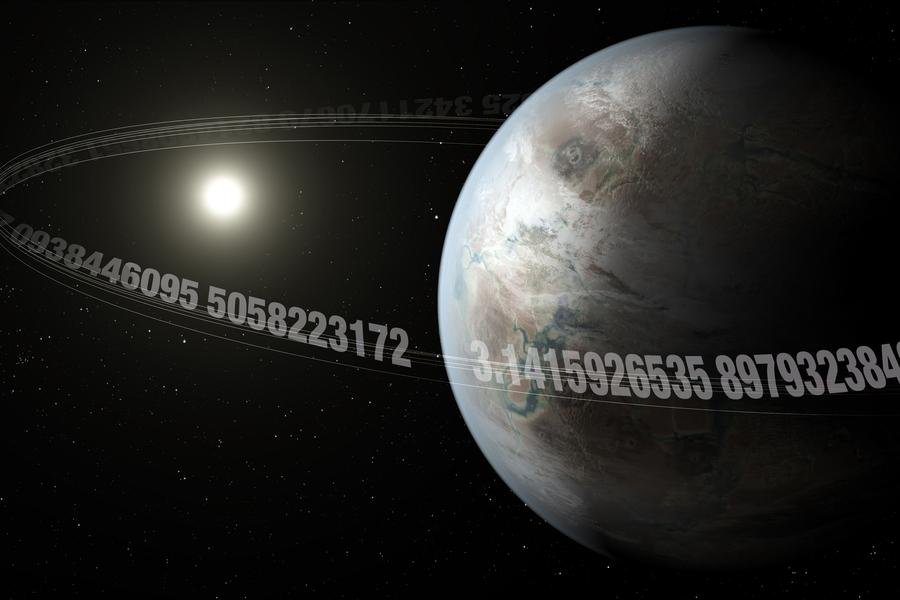Every week, TecMundo and #AstroMiniBR bring together five relevant and entertaining astronomical curiosities produced by the world’s collaborators. twitter profile To spread the knowledge of this science, which is the oldest!
#1: Earth-sized “Planet Pi”!
Do you know Earth-pi?
It is an exoplanet about the size of Earth, but orbits its star in 3.14 days!
With this proximity, Earth-pi is unfortunately not very warm and livable for us. Every day is pi day on pi-Earth! #AstroMiniBR pic.twitter.com/dRLxAfCprc
— Camila Esperança (@astronomacamila) 14 March 2023
Sometimes math and astronomy meet by happy coincidence! An international team led by MIT astronomers discovered a “Earth of Pi” in 2020. It is an Earth-sized planet that orbits its star every 3.14 days in an orbit reminiscent of the universal mathematical constant.
Researchers discovered signs of the planet in data taken in 2017 by NASA’s Kepler Space Telescope K2 mission. The team focused on the system earlier this year with SPECULOOS, a ground-based telescope network, confirming that the signals came from a planet orbiting its star. And indeed, the planet still seems to orbit its star today with a pi period every 3.14 days.
The new planet, named K2-315, orbits a cold, low-mass star with a radius of 0.95 to Earth and a fifth the size of our Sun at a staggering 81 kilometers per second!
#2: Earth’s rotation from a completely different perspective!
Your world is upside down!
The video below shows the Earth spinning through the stabilization of the sky over a 24-hour period, showing the stagnant stars under the Namibian sky!#AstroMiniBR
(c) Bartosz Wojczynskipic.twitter.com/McFkcg1Ht9
— Nicolas Oliveira (@nicooliveira_) March 13, 2023
Have you ever seen your world turned upside down? If we were in a fixed perspective in celestial space, this would happen every day. Most videos showing the night sky accelerated shows stars and other celestial bodies moving on a static Earth.
In the video above, however, the camera was forced to spin at an Earth-equivalent rotational speed to keep the stars stationary and the Earth to revolve around them. In this way, the video, which presents each hour as compressed into one second, shows the daily rotation of the Earth, called daily motion. Shot in an open field in Namibia, Africa, in 2020. Shadows shift as the planet rotates, and the Belt of Venus appears for a moment, until day turns to night.
Finally, the majestic band of the Milky Way across the night sky, moons reflecting sunlight, and the Large and Small Magellanic Clouds visible from Earth’s southern hemisphere appear.
#3: Why can the lunar disk perfectly cover the sun disk?
HE ?? 400x larger ??.
However ?? 400 times farther ?? from ??.Because of this incredible proportion, both have the same angular dimension in the sky. If the Moon were further away, it would not be able to completely cover the Sun in a solar eclipse.#AstroMiniBR pic.twitter.com/ZFbzPXOrGr
– Ana Carolina Owner (@astroposses) 16 March 2023
During a total solar eclipse, the Moon passes between the Earth and the Sun and casts its shadow on the Earth’s surface. This completely blocks out sunlight for those in this particular area. But the Moon is about 400 times smaller than the Sun. So how does it manage to block out all that light?
The answer to that lies far away. When objects are closer to us, they appear larger than distant objects. For example, most of the stars in the night sky look like tiny dots of white light, but in reality, most of these stars are much larger than our Sun, just much further away from Earth! Although the Moon is 400 times smaller than the Sun, it is about 400 times closer to the Earth than the Sun. This means that from Earth the Moon and Sun appear approximately the same size in the sky; this is a physical property we call angular dimension.
However, as the Moon moves away from Earth by about 4 centimeters per year, this effect will not last forever: in a few million years the Moon will no longer be able to completely block the Sun’s light, and solar eclipses will always be partial. . /take it back.
#4: What phase of the Moon in the sky?
?? Is the moon growing or shrinking? It’s easy to learn!
Here in the Southern Hemisphere, the Moon is C-shaped while it is crescent-shaped. When it has an inverted C shape, it goes down.
It is the opposite in the Northern Hemisphere due to the shape of the earth.#AstroMiniBR pic.twitter.com/rDaZBNeCiG
— Thiago Flaulhabe (@TFlaulhabe) 16 March 2023
The Moon has four main phases in its lunar cycle: new moon, growing moon, full moon, and waning moon. It’s easy to recognize the full and new phase in the sky, but what about when it grows and dwindles? We can orient ourselves as follows: if it appears in the afternoon, it is in the crescent phase; if it occurs in the morning, it is in the phase of reduction.
Other times, you need to be aware of the main points or follow a simpler and easier tip: it increases if it is C-shaped, it decreases if it is D-shaped. However, it is worth remembering that this only applies to the southern hemisphere; In the northern hemisphere it is the opposite.
#5: How far is the moon from us?
The distance between the Earth and the Moon is so great that every other planet in the Solar System could fit between them!
But since the planets are not perfectly spherical, should we turn Jupiter or Saturn sideways to take up less space?
© NASA/JPL-Caltech #AstroMiniBR https://t.co/LkRZ7tWSrG pic.twitter.com/K5V0s0PWVe
— Aline Novais (@astroaline) 19 March 2023
Because the Moon’s orbit around the Earth is an ellipse, not a perfect circle, its distance is not always the same. Sometimes closer to us, sometimes farther.
At their closest points, called perigee, the centers of the Earth and the Moon are generally less than 357,000 km away. This value is significantly smaller than the combined diameter of all the planets in the Solar System, so if we align the planets from Mercury to Uranus, this distance will not be enough to support them.
But at the furthest point of its orbit, the distance between the centers reaches about 406,000 kilometers, which is more than enough for the planets to fit together comfortably. However, even if we take the average value of the Earth-Moon distance to be 384 thousand kilometers, it still fits in this gap, since the sum of the diameters of the planets in the Solar System is about 365 thousand kilometers. Add Pluto as a joke!
Source: Tec Mundo
I’m Blaine Morgan, an experienced journalist and writer with over 8 years of experience in the tech industry. My expertise lies in writing about technology news and trends, covering everything from cutting-edge gadgets to emerging software developments. I’ve written for several leading publications including Gadget Onus where I am an author.












